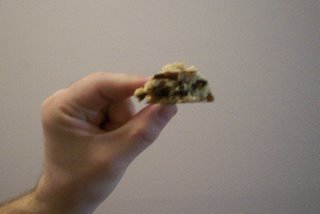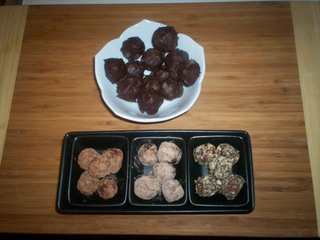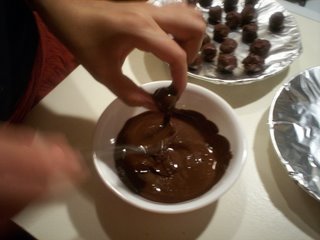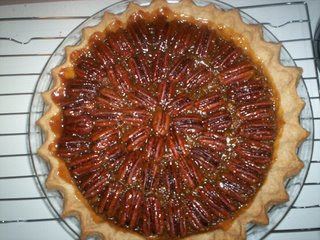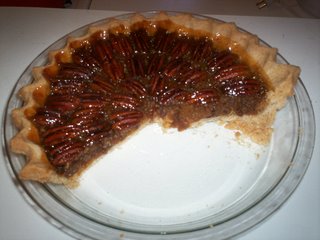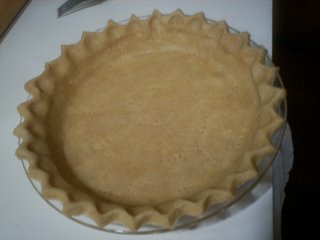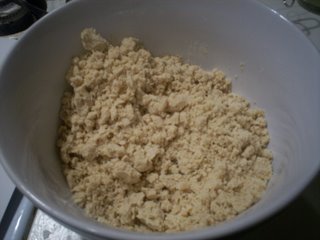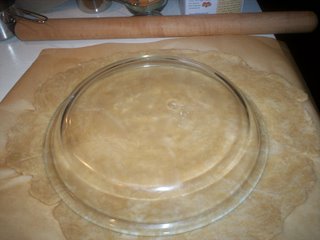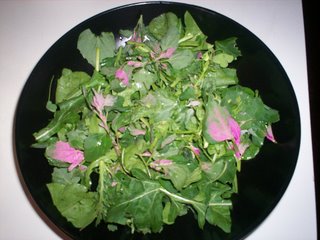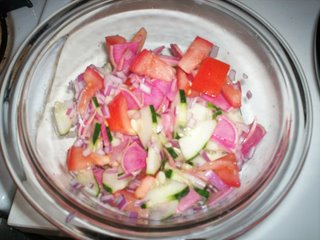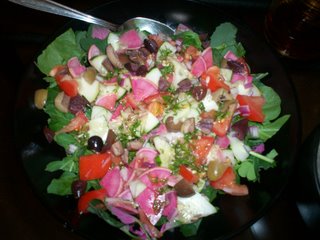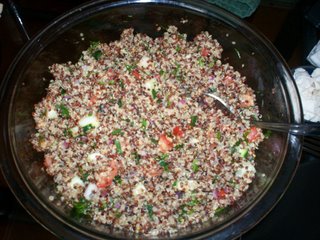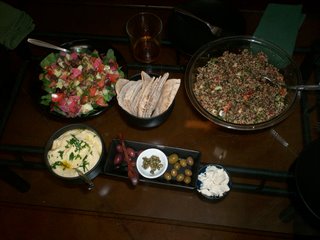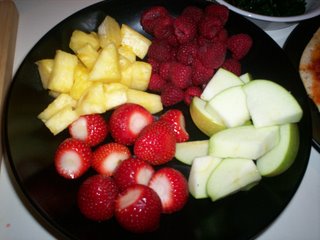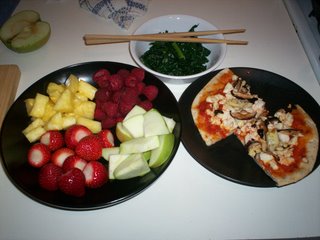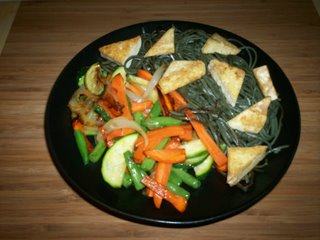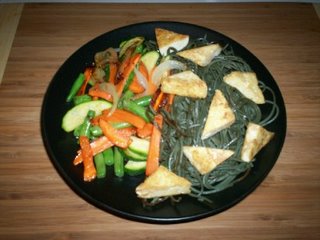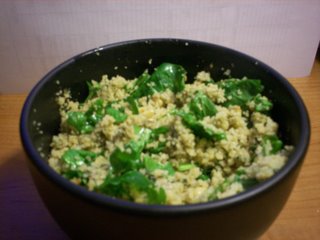The ugly side of soyfoods
This morning I read an article titled, "Soy is making kids 'gay'". Here is an except:
I felt compelled to email Mr. Rutz, so here is my letter:
Soy is feminizing, and commonly leads to a decrease in the size of the penis, sexual confusion and homosexuality. That's why most of the medical (not socio-spiritual) blame for today's rise in homosexuality must fall upon the rise in soy formula and other soy products. (Most babies are bottle-fed during some part of their infancy, and one-fourth of them are getting soy milk!) Homosexuals often argue that their homosexuality is inborn because "I can't remember a time when I wasn't homosexual." No, homosexuality is always deviant. But now many of them can truthfully say that they can't remember a time when excess estrogen wasn't influencing them.
Mr. Rutz,One of the major problems I have with articles like this (other than the obvious lack of information) is that they offer no solution. He tells us you can hardly escape soy foods anymore, but doesn't tell us what ingredients to avoid on labels, or tell us alternatives. This, in my opinion is very sloppy and alarmist.
Your article titled, "Soy is making kids 'gay'" is not only unbalanced and alarmist, but it contains huge generalizations. Soy products should not be lumped into one big category. There are many types, for example:
Edamame - whole, fresh or frozen green soybeans, which are similar to green peas
Yellow or Black soybeans - whole, dried soybeans you cook like other beans such as pinto beans or chick peas
Natto - dried soybeans, cooked and fermented (generally a day or two) with a spore.
Miso - dried soybeans, cooked and fermented (usually three months to three years) with a grain that has been treated with the koji spore.
Soy Sauce, Tamari or Shoyu - traditionally, the liquid that accumulated as a result of fermenting soybeans for miso. Now, most soy sauce is artificially produced by "fermenting" with alcohol. Look for alcohol-free brands, which will be much higher quality and have a milder flavor. Shoyu is (usually) traditionally brewed Japanese soy sauce, the most common brand being Nama Shoyu. Tamari used to be wheat-free, but celiacs should read ingredients carefully, as some contain wheat or barley flour.
Tempeh - dried soybeans, cooked and fermented (usually for a day or two) with a spore.
Soymilk - dried soybeans, soaked in water, then pulverized in blender with boiling water, liquid strained and cooked.
Okara - byproduct of soy milk, the fiber left over from making soy milk.
Tofu, regular - "the cheese of the soy world", tofu is made from curds of soy milk, so after soy milk has been cooked, a coagulant is added, typically nigari, calcium sulfate, calcium chloride, magnesium chloride or for home producers, even lemon juice. Tofu made with calcium sulfate, and calcium chloride naturally have more calcium than tofu made with other coagulants.
Tofu, silken - I am a little unclear on the exact production of silken tofu, but commercial manufacturers use isolated soy protein or soy isolates, which are heavily refined and NOT whole foods.
Texturized Vegetable Protein - again, I am a little unclear on the exact production of TVP, however, unlike the other soy foods I have mentioned, CANNOT be produced at home because it involves processing soy flour through a machine at extremely high pressure and a high temperature in order take out the fat and compress it.
As a natural and whole foods educator, while I may recommend any of the first six ingredients, which are whole or fermented foods, I would discourage the use of silken tofu and strongly advise against TVP and foods containing isolated soy proteins. All soy foods are not created equal. While it seems you agree with me on this point, you carelessly gloss over this with your post script addendum by basically saying that the only soy foods you're opposed to are tofu and soy formula.
I believe the foundation of a healthy diet should be whole foods, like whole grains, legumes, vegetables, mineral-rich condiments, and expeller-pressed oils. Everything else should be eaten in moderation. Red wine, chocolate and even cake are fine as occasional treats, but shouldn't be the base of your diet, and neither should any refined foods, including tofu.
In traditional eastern cultures, tofu was considered bad for men's virility and cooling to the libido, but even this was useful. Buddhist monks would eat cold tofu almost medicinally since they had taken vows of celibacy.
All foods are more appropriate for certain people and less appropriate for others. Alcohol is not really appropriate for pregnant or nursing women or children, maple syrup and honey are not appropriate for diabetics, and a diet of hamburgers, french fries and milkshakes, while unhealthy for anyone, is especially inappropriate for anyone with high blood pressure or high cholesterol. Soy foods, with their high phyto-estrogen content, are generally more appropriate for women than men, and can even be useful in hormone replacement for menopausal women.
In regard to the headline of your article, your article really only touches on male homosexuality by discussing the "feminization" of males. How would you explain female homosexuality?
Instead of vilifying the lowly soybean and alarming consumers and parents, perhaps you could help educate them. The most commercially used soy foods are high-heat refined soybean oil and texturized vegetable protein, both of which are highly processed and unhealthy. These are usually found in packaged convience foods such as chips and microwavable burritos which, I think everyone can agree, are not recommended for anyone. Perhaps you could advise against these types of foods and encourage simple, home cooked meals and moderation for your readers.
A more thoughtful approach to stories that emphasize "the evils of soy foods" might touch on topics such as soy additives/fillers in foods, overuse of foods such as soy and wheat leading to allergies, subjective research being used to market products as health-promoting and certain industries being ready and willing to jump on any bandwagon that will generate revenue, ie. companies seeing that soy foods are "hot" right now, so using them in everything.
In health,
Christina
Mr. Rutz says not to "even think about" giving children soy formula. Yet he doesn't mention that cow's formula contains hormones like BGH and tons of antibiotics and that the best thing you could do would be to breast feed or join a group like La Leche League to milk-share. He never gives any advice for what you do if you are unable to breastfeed, use cow's milk formula, OR soy formula. What about grain formulas like rice or oat formula? Grains are much easier to digest than beans, so they seem like a perfect choice for babies with digestion problems. You can even find recipes to make your own here.
Mr. Rutz could help our society by encouraging women to breast feed their children. I used to see a billboard that said something along the lines of "Breasts were made for babies", with a picture of a nursing baby. I loved it. It's healthier for both the baby and the mother, it reduces the chances of ear infections, and it may even help brain development, however I have a feeling that Mr. Rutz may feel that promoting breastfeeding would be promoting deviant and immodest behavior.


